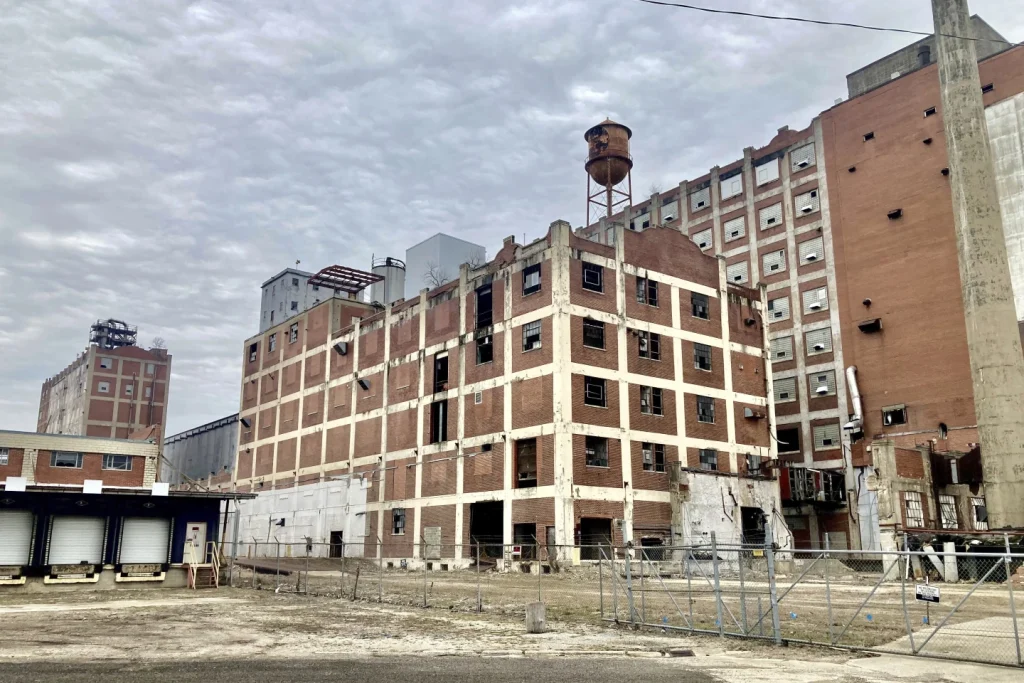In 2019, a poignant event unfolded in Springfield, Illinois, that would stir the determination of a retired city fire marshal, Chris Richmond.
A stray dog, perched atop the towering grain silos of the long-abandoned Pillsbury Mills, symbolized the desolation and neglect that had befallen the once-thriving industrial site.
As the dog tragically succumbed to ingesting rat poison, it became a stark reminder of the hopelessness that pervaded the vacant campus. For Richmond, this was an unacceptable blight on the community, prompting him to take action.
A year later, Richmond, alongside dedicated allies, founded a nonprofit organization named Moving Pillsbury Forward.
Their ambitious objective was to orchestrate the demolition of the century-old plant and revitalize the sprawling 18-acre site with a comprehensive five-year, $10 million plan.
With $6 million in commitments already secured and a clear roadmap for obtaining the remaining funds, the group set its sights on transforming the decaying landscape into a vibrant hub of activity.
The initiative’s leadership, including Richmond as president and treasurer, vice president Polly Poskin, and secretary Tony DelGiorno, has not only made significant progress in securing financial backing but has also overseen the demolition of two structures, with plans for more extensive demolition in the coming year.
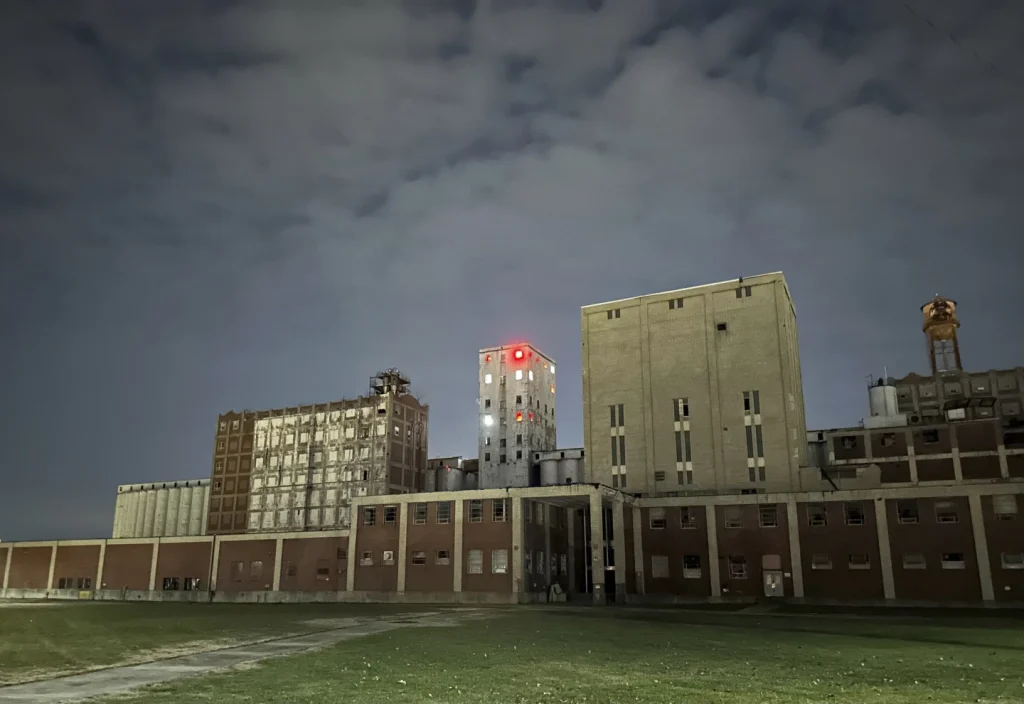
Positioned adjacent to a railyard with national connections, the vision for the site extends to a future characterized by light industrial activity, promising renewed economic vitality for the area.
Remarkably, Moving Pillsbury Forward has not only sought to revitalize the physical space but has also succeeded in turning the dilapidated site into a cultural phenomenon.
The site has become a popular destination for tours, drawing in numerous visitors who are captivated by its historical significance.
Oral histories have surfaced, shedding light on the site’s rich past, while even graffiti artists, once considered vandals, have been embraced as resident artists, contributing to captivating nighttime exhibitions that have garnered widespread attention.
The initiative’s commitment to preserving the heritage of Pillsbury Mills is exemplified by the efforts of retired University of Illinois archaeologist Robert Mazrim, who has curated an “Echoes of Pillsbury” museum, showcasing artifacts and memories from the site’s storied past.
Furthermore, the recent illumination of the plant’s towering headhouse with holiday lights underscores the initiative’s dedication to infusing the site with renewed vitality and community spirit.
While the fervor with which Moving Pillsbury Forward pursues its mission may set it apart, the broader context of activist groups embarking on similar formidable reclamation endeavors is not unusual.
David Holmes, a Wisconsin-based environmental scientist and brownfields redevelopment consultant, suggests that such initiatives, while challenging, are not uncommon in the realm of environmental and industrial reclamation efforts.
The story of Moving Pillsbury Forward serves as a testament to the resilience of communities and the transformative power of dedicated individuals and organizations.
It exemplifies the potential for revitalizing neglected spaces, fostering community engagement, and preserving the heritage of industrial landmarks.
As the initiative continues to make strides in its mission, it stands as a beacon of hope, inspiring similar endeavors and demonstrating the profound impact that can be achieved through collective determination and unwavering commitment to renewal and restoration.
Government funding has undergone significant expansion to address pressing societal needs. The allocation of resources has increasingly targeted high-impact organizations dedicated to aiding the most vulnerable communities.
This shift represents a departure from the traditional focus on urban centers and high-profile projects that primarily serve political agendas.
An illustrative case is the Pillsbury campus in Springfield, which was established in 1929 and underwent multiple expansions until the 1950s.
Notably, the post-World War II era saw the emergence of the world’s first boxed cake mixes from a bakery mix division housed within the campus.
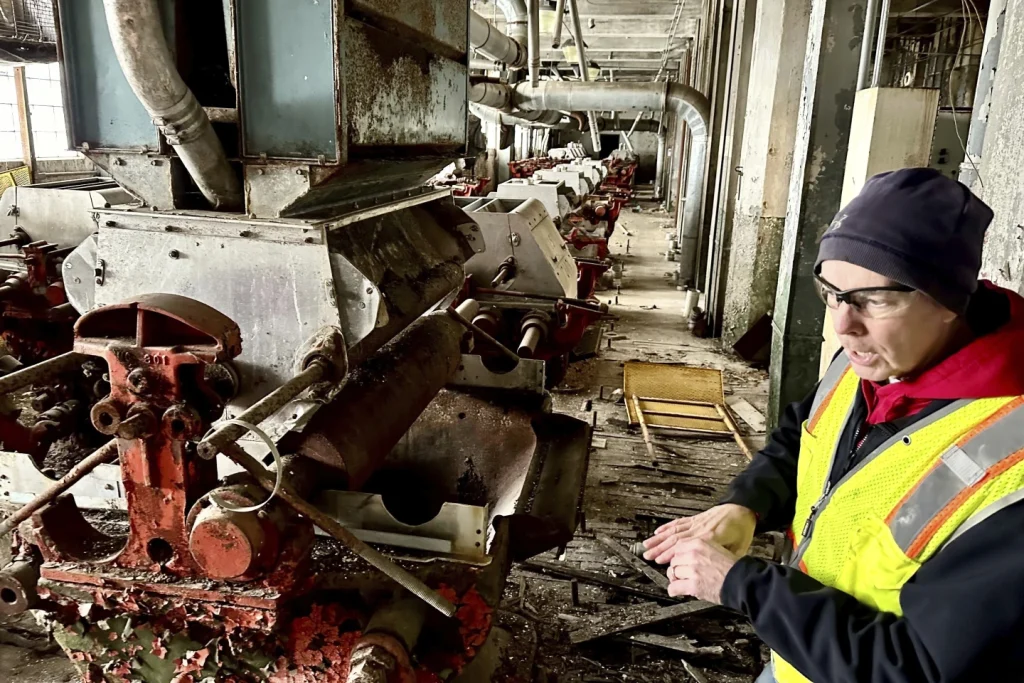
Furthermore, there exists compelling evidence suggesting that the iconic Pillsbury doughboy, the brand’s beloved mascot, was originally conceptualized by a Springfield plant manager, contrary to the company’s official stance attributing its creation to a Chicago-based advertising agency.
The subsequent sale of the plant to Cargill in 1991, followed by its closure a decade later, marked a significant transition in the site’s history.
Subsequently, a scrap dealer’s unlawful disposal of asbestos in 2015 led to a substantial cleanup effort by the U.S. Environmental Protection Agency, incurring costs amounting to $3 million.
However, a remarkable turn of events occurred when Moving Pillsbury Forward successfully persuaded the EPA to waive the cleanup costs and acquired the property for a nominal fee of $1.
The current challenge lies in the comprehensive cleanup of the remaining asbestos and lead paint chips, as well as the demolition of over 500,000 square feet of factory infrastructure, including a towering 242-foot headhouse and 160 silos standing at 100 feet each.
Richmond, a representative of the initiative, candidly acknowledges the enormity of the task at hand, emphasizing the need to take the initial steps to address the situation.
Crucially, the timing is opportune. As per Holmes, the availability of funding for remedying neglected areas in America has reached unprecedented levels.
This influx of financial resources presents a unique opportunity to address long-standing environmental and social challenges, exemplified by the Pillsbury site’s transformation.
In conclusion, the expansion of government funding to support critical initiatives such as the Pillsbury campus revitalization underscores a paradigm shift towards prioritizing the welfare of underserved communities and addressing historical environmental liabilities.
This concerted effort not only reflects a commitment to rectifying past neglect but also signifies a broader societal dedication to fostering sustainable and equitable development.
The 2021 Infrastructure Investment and Jobs Act marks a significant milestone in the United States’ commitment to environmental remediation and community revitalization.
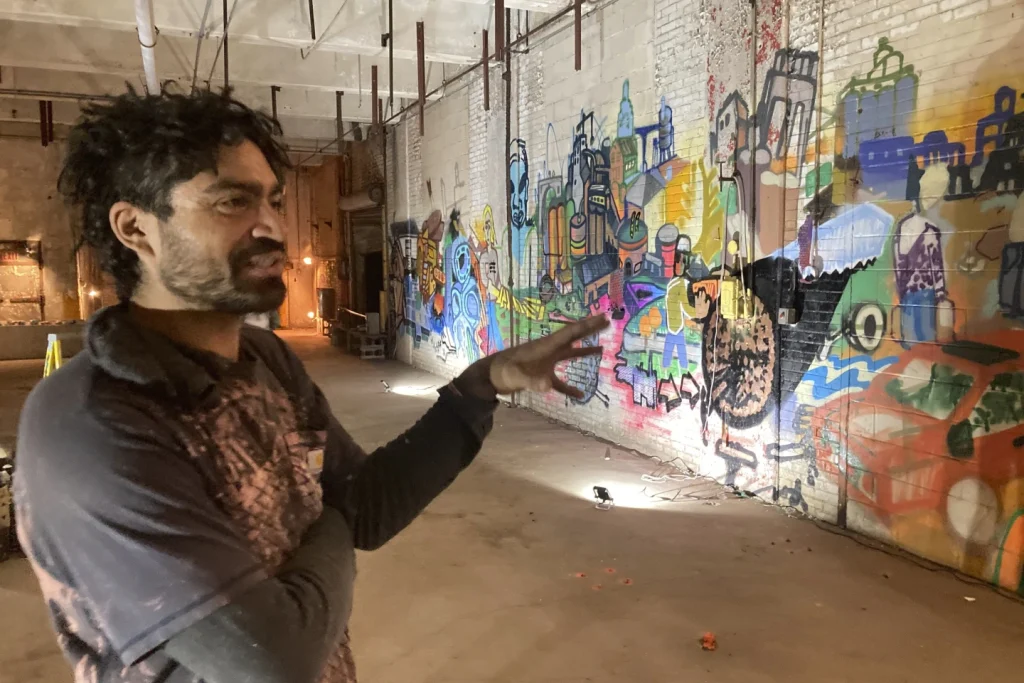
With a substantial allocation of $1.2 billion for brownfields cleanup, four times the typical annual allotment, the legislation reflects a concerted effort to address the environmental and economic challenges posed by contaminated sites.
However, within this broader framework, the case of the Pillsbury group’s request for additional funding, as well as their multifaceted approach to the revitalization of a specific brownfield site, presents a compelling narrative of community-driven transformation and the enduring power of collective vision.
At the heart of the Pillsbury group’s application is a poignant appeal that transcends mere economic considerations.
By emphasizing the intangible benefits of their proposed cleanup and restoration efforts, the group underscores the intertwined nature of economic and environmental justice.
The 12,000 individuals residing within a 1-mile radius of the contaminated site find themselves at the nexus of this complex issue, with only 25% holding a high school diploma and a median household income of $25,000.
The juxtaposition of these stark statistics against the promise of a renewed, vibrant community underscores the transformative potential of the proposed initiative.
“It’s a tough sell but at some point, there are enough people who have a vision for what it could be that that’s a powerful incentive,” remarked Poskin, encapsulating the resilient spirit and unwavering determination of the community.
This sentiment encapsulates the essence of the Pillsbury group’s endeavor—a testament to the enduring human capacity to envision and strive for a better future, even in the face of daunting challenges.
Furthermore, the group’s commitment to preserving the memories and histories associated with the site speaks to a profound recognition of the site’s cultural and social significance.
By collecting oral histories from past employees and documenting the remnants of the site for historical context, the Pillsbury group acknowledges the importance of honoring the legacy of the place they seek to transform.
The inclusion of ex-workers and neighbors in ongoing tours and group photos not only serves as a poignant tribute to the site’s rich history but also fosters a sense of community engagement and ownership in the revitalization process.
The unexpected collaboration with graffiti artists, culminating in a widely acclaimed exhibition, adds an intriguing dimension to the Pillsbury group’s initiative.
The decision to embrace the presence of these artists, rather than resorting to punitive measures, reflects a spirit of inclusivity and openness.
The resulting exhibition, featuring the works of artists such as “Shock,” “Static,” and HOTTEA, not only injects a fresh, vibrant energy into the site but also symbolizes a convergence of diverse creative expressions in the service of community renewal.
The words of artist Eric Rieger, expressing admiration for the community’s resilience and contributions, underscore the profound impact of the Pillsbury group’s efforts.
His acknowledgment of the community as “the backbone of America” encapsulates the transformative potential inherent in community-led initiatives, transcending the boundaries of economic revitalization to encompass the restoration of social fabric and cultural vitality.
In conclusion, the Pillsbury group’s multifaceted approach to brownfields cleanup and restoration serves as a compelling testament to the transformative power of community-driven initiatives.
By weaving together economic, environmental, and cultural considerations, the group has demonstrated a profound commitment to fostering a renewed sense of hope, pride, and resilience within the community.
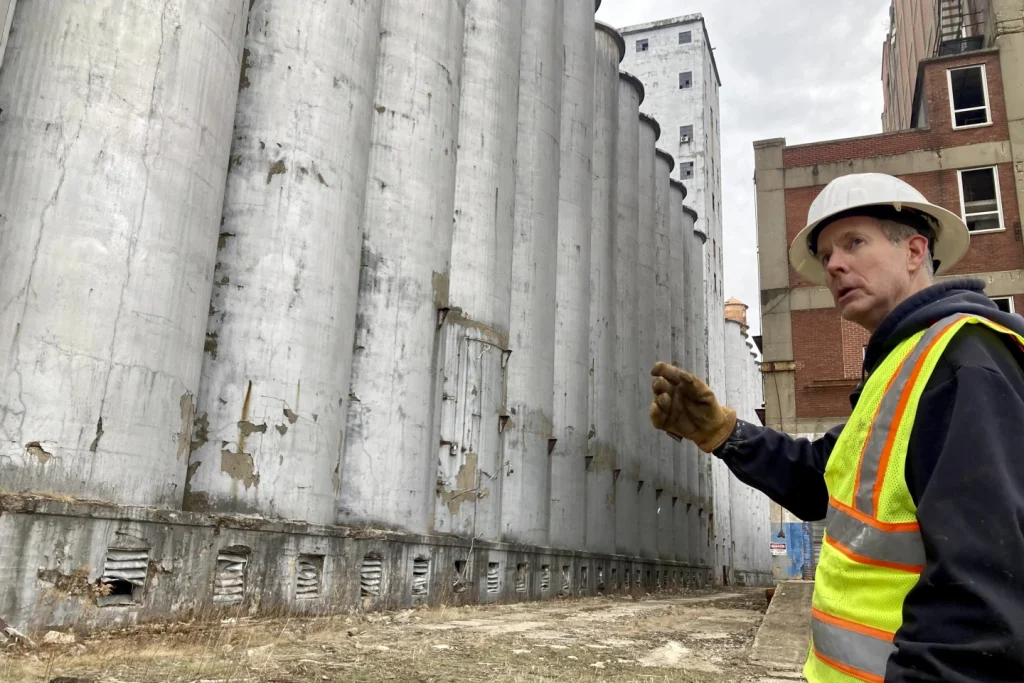
Their story stands as a testament to the enduring capacity of communities to envision and work towards a brighter future, even in the face of formidable obstacles.
As we reflect on the broader implications of the 2021 Infrastructure Investment and Jobs Act, the Pillsbury group’s narrative serves as a powerful reminder of the indispensable role of community agency and vision in shaping the trajectory of environmental and social transformation.
This narrative invites us to recognize and celebrate the extraordinary potential embedded within communities, urging us to embrace a collective ethos of resilience, creativity, and solidarity in the pursuit of a more vibrant and inclusive future for all.
